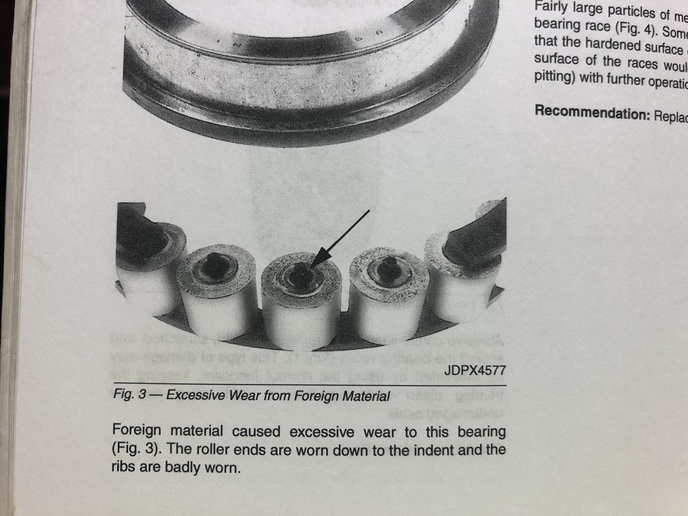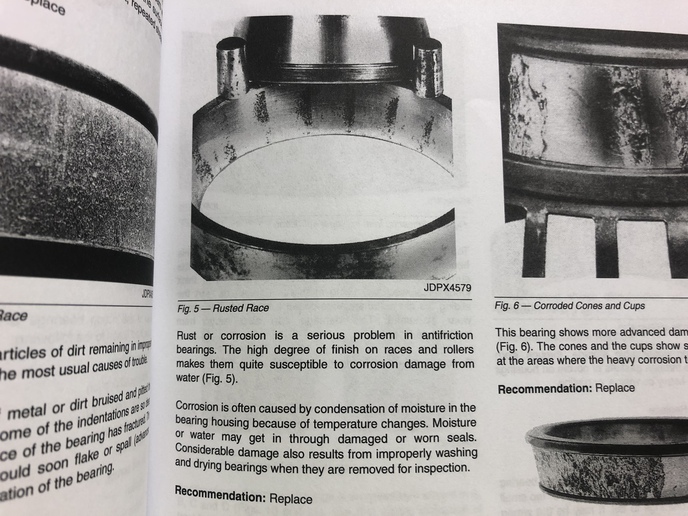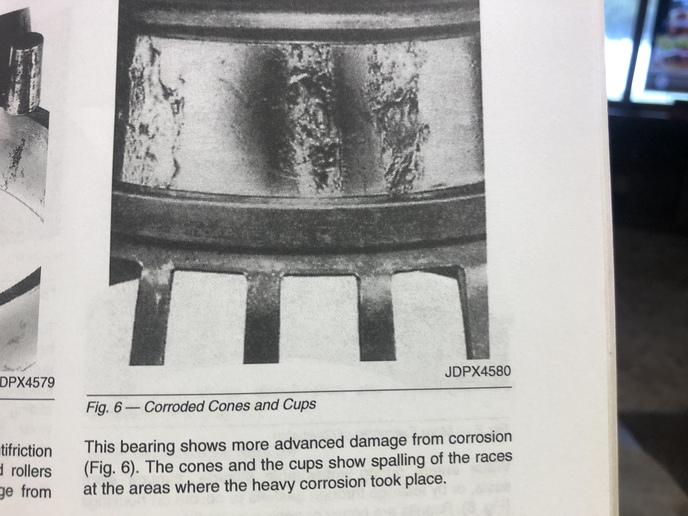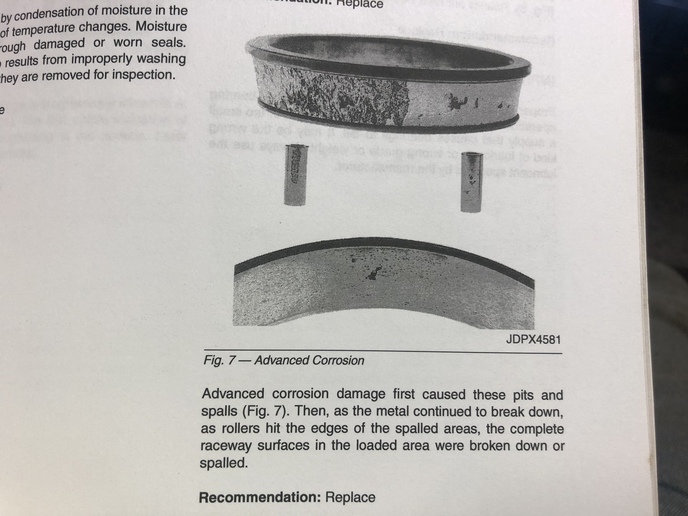Will Herring
Well-known Member
Finally got around to taking the first front hub off the WD. This is the side that had been damaged before apparently, as there was a gas cap looking thing welded on the hub itself (I assume the spindle cut thru it at some point in the past, at least 30+ years ago). And the hub has a good 1/4" to 1/2" of play in and out on the spindle.

Had to go out and buy a giant wrench so I could get the hub cap off in tandem with a pry bar, and when I did, all of the thick goop came out. Castle nut was held in place with a nail instead of a cotter pin.

Here is the inside of the hub:

Here is the outside of the hub, along with what I believe to be the inner flat washer and the ... bearing spacer? Unless old felt seals were just really hard and rigid? :

Here's all the pieces that came out... The top left is the hub cap. The bottom is the inner and outer bearing. But on the upper right side is three washers that were between the castle nut and the first bearing... And that confuses the daylights out of me. I see no reason why those should have been in there.

Here's the spindle with all the parts that are laying on the board already removed -- does anything else look like it should still come off the spindle still? :

So... Anybody have any ideas where I should go from here? Next on my list is to clean everything up so I can see better any wear or damage, but the three extra washers/spacers really has me puzzled.

Had to go out and buy a giant wrench so I could get the hub cap off in tandem with a pry bar, and when I did, all of the thick goop came out. Castle nut was held in place with a nail instead of a cotter pin.

Here is the inside of the hub:

Here is the outside of the hub, along with what I believe to be the inner flat washer and the ... bearing spacer? Unless old felt seals were just really hard and rigid? :

Here's all the pieces that came out... The top left is the hub cap. The bottom is the inner and outer bearing. But on the upper right side is three washers that were between the castle nut and the first bearing... And that confuses the daylights out of me. I see no reason why those should have been in there.

Here's the spindle with all the parts that are laying on the board already removed -- does anything else look like it should still come off the spindle still? :

So... Anybody have any ideas where I should go from here? Next on my list is to clean everything up so I can see better any wear or damage, but the three extra washers/spacers really has me puzzled.






